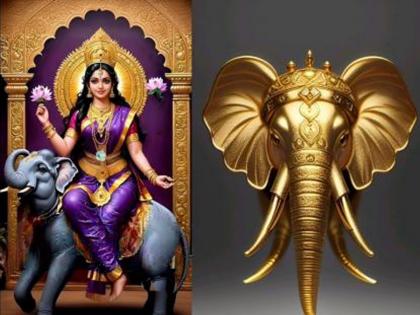Kojagiri Purnima 2024: Complete Gajpuja Vidhi and Vrat for Health and Wealth
By Lokmat English Desk | Updated: October 16, 2024 10:38 IST2024-10-16T10:37:05+5:302024-10-16T10:38:10+5:30
Hadaga, or Bhondla, is a vibrant ritual celebrated by girls during the month of Ashwin. This tradition is not ...

Kojagiri Purnima 2024: Complete Gajpuja Vidhi and Vrat for Health and Wealth
Hadaga, or Bhondla, is a vibrant ritual celebrated by girls during the month of Ashwin. This tradition is not confined to any particular family; rather, it embodies a communal spirit among friends. The festivities last for fifteen days, commencing from Navratri and culminating in Kojagari. For those who miss the opportunity to participate during Navratri, gathering to play Hadaga or Bhondla on Kojagari is a cherished alternative.
The celebration begins with the onset of the Hasta Nakshatra in Ashwin, marking the start of the following sixteen days or the ten days of Navratri dedicated to Hadaga. During this time, an elephant is drawn on a board using rice or chalk, and the girls take turns singing traditional Bhondal songs, such as "Ailma Pailma Ganesh Deva." The girl who brings the Bhond covers it with a pot and carries it to Khirapat, while the other girls eagerly await to guess what she will be in Khirapat. Until her identity is revealed, it remains a mystery and is not considered complete.
Also Read: Kojagiri Purnima 2024: Health Benefits of Drinking Masala Milk During Full Moon
In some regions, it is customary to erect a branch of the Hadga tree and form a circle around it, mirroring the drawing of elephants on the board. Hadaga is also known as a rain festival, as the rain during Hasta Nakshatra produces a sound reminiscent of "Gad, Gad, Gad." These days mark the tail end of the monsoon season. Following heavy rains during Navratri, the sun shines brightly, often resulting in a beautiful rainbow. The rainwater nourishes the earth, making it appear as though it is adorned with a green shawl.
The elephant symbolizes glory and serves as the vehicle of Lakshmi. On the night of Kojagari, offerings of milk and sugar are made to the elephant, either through worship or by presenting an elephant made of rice on a plate. Bhond is played by forming a circle around the board, and the milk is allowed to curdle. When the rays of the full moon touch it, this offering is shared among everyone as a symbol of blessing.
Rain during Hasta Nakshatra is of great significance. It is said that "elephants will fall and pearls will grow." Sufficient rainfall is believed to yield bountiful harvests, while the elephant's trunk is thought to bring grace from Lakshmi, bestowing blessings upon Vaibhavalakshmi. Whether observed as a Gajpuja ritual or enjoyed as a game of Bhondal, this celebration invites the blessings of Lakshmi and fosters a sense of community and joy.
Open in app